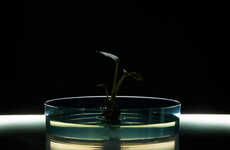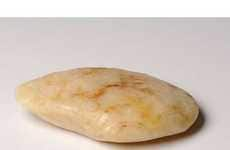
Bioremediation (Plants and Microbes) Eat Up Contamination
Katie Cordrey — December 26, 2008 — Eco
References: bioremediationinc & princeton.edu
Bioremediation uses biological processes to clean up environmental messes. The basic idea is that trained bacteria eat the waste that industries produce. It differs from other methods in that it uses living organisms to do the work that was once done with chemical agents. For example: A carwash in California uses bacteria that eats oils and soaps, allowing it to recycle rather than discharge the water into the septic system; Sugar cane biomass is used to remove petroleum toxins from soil in London, Ontario; and an all-purpose cleaner has been approved by the Florida EPA for the bioremediation of petroleum contaminants. The cleaner breaks the complex chemical structures into more simple ones making them easier to clean up. Other applications allow for removal of pesticides from water, cleaning DDT from soil, removing heavy metals, and purifying water with tree plantings.
Some bioremediation schemes allow plants to withdraw the harmful substances from the earth, air, and water. The substances are broken down into harmless components and/or harvested when the plant material is cut.
The video above shows one bioremediation product in action.
Some bioremediation schemes allow plants to withdraw the harmful substances from the earth, air, and water. The substances are broken down into harmless components and/or harvested when the plant material is cut.
The video above shows one bioremediation product in action.
Trend Themes
1. Bioremediation - Using biological processes to clean up environmental messes presents opportunities for disruptive innovation in waste management and pollution control.
2. Bacteria-based Cleaning - The use of bacteria to eat oils, soaps, and other contaminants in various industries offers opportunities for disruptive innovation in cleaning products and water treatment systems.
3. Plant-based Bioremediation - Harnessing the natural ability of plants to remove harmful substances from the environment presents opportunities for disruptive innovation in agriculture and landscaping industries.
Industry Implications
1. Waste Management - The application of bioremediation techniques for cleaning up industrial waste opens up opportunities for disruptive innovation in the waste management industry.
2. Cleaning Products - The development of bacteria-based cleaning solutions for various industries creates opportunities for disruptive innovation in the cleaning products market.
3. Agriculture - Using plants for bioremediation purposes can lead to disruptive innovation in agriculture, particularly in the field of sustainable soil remediation and toxin removal.
4.6
Score
Popularity
Activity
Freshness















